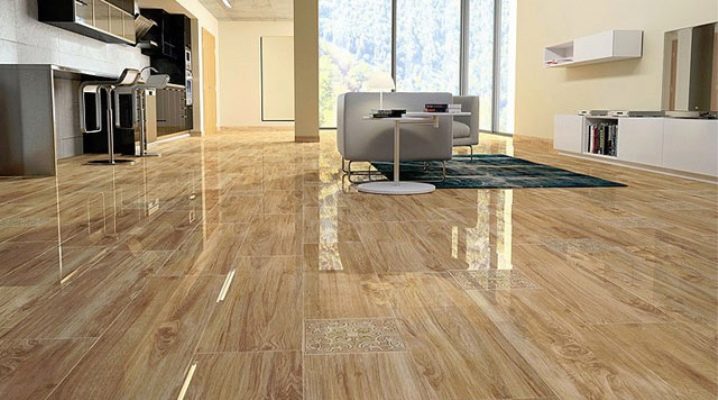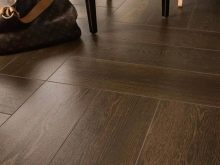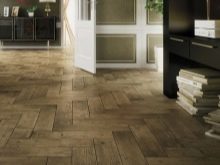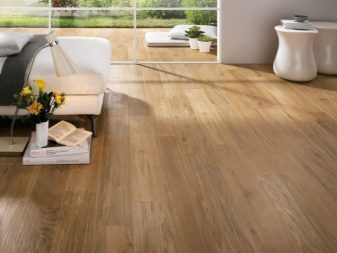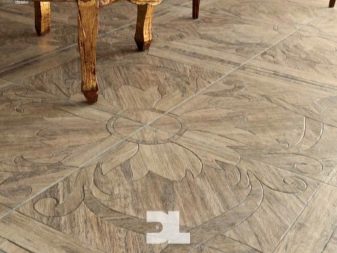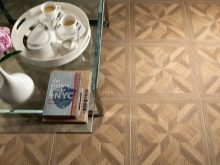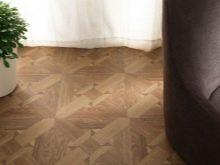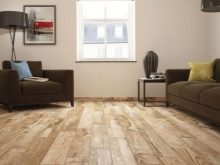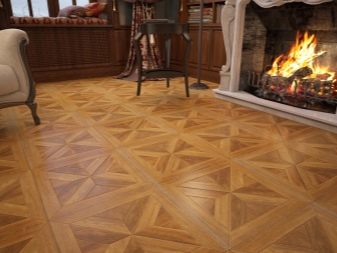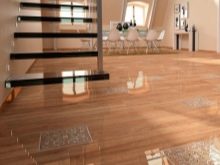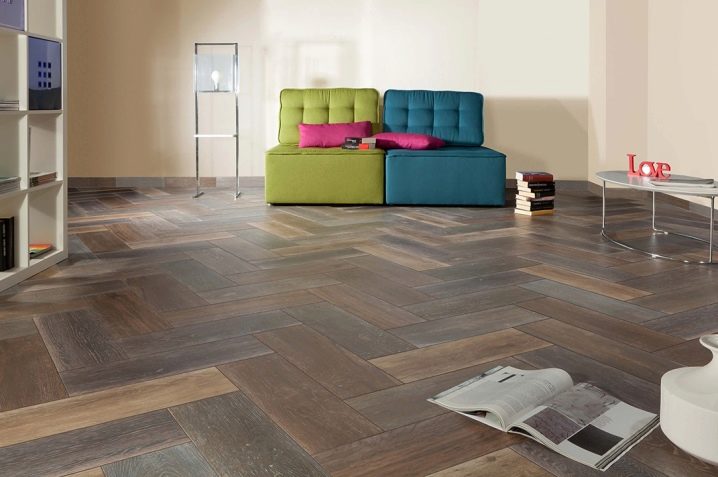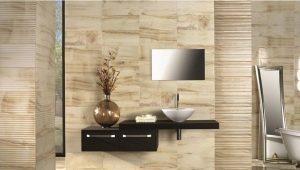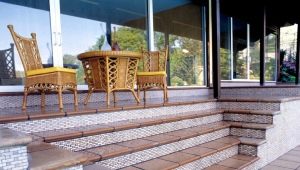Porcelain stoneware for parquet: features of choice
Porcelain stoneware is one of the alternative materials for flooring. It combines the strength of tiles and the aesthetic look of wood. At the same time, porcelain stoneware is easy to use and cheaper than real parquet.
Special features
For the manufacture of porcelain stoneware, a mixture of clay, quartz sand, special melters and water is used. The mixture is poured into molds, pressed, then fired at high temperatures.
Thanks to modern technology, you can create a texture that imitates wood. Sometimes it is difficult to distinguish the surface of porcelain tiles from the parquet, not only by eye, but also by touch. At the same time, manufacturers can produce porcelain tiles exactly matching the size of the floor or board.
Main advantages:
- resistance to moisture, temperature, chemical and mechanical damage;
- ease of care and environmental safety;
- material strength;
- long service life;
- ability to imitate various natural breeds, the presence of deep and saturated color;
- Surface may be non-slip.
Porcelain stoneware for parquet flooring is used for finishing floors, walls, stair designs in public buildings, houses and apartments, offices, swimming pools, laboratories, garages. It is perfect for decoration of the terrace area and barbecue, fireplace room.
Kinds
Stoneware for parquet, thanks to various forms and possibilities of imitation, will decorate any interior.
By methods of surface treatment emit:
- Polished stoneware. This is a spectacular and non-slip material. It is better to use it for decorating walls. This type is absolutely not suitable for kitchen and bathroom.
- The laped version has a non-slip surface. It is only partially polished, due to which it is more attractive.
- Matt tiles with unpolished rough surface is one of the most durable and wear-resistant. Despite the fact that the surface is non-slip, the appearance of the product looks quite simple.
- Relief stoneware is ideal for wet rooms and cladding terraces and balconies.
- Satin tile shines and has a velvety surface. Before roasting it is covered with mineral salt.
- Unglazed cremogranite is colored throughout the thickness.
- The glazed version is glazed, then calcined. Drawings are applied by rolling or spraying.
By type of imitation distinguish:
- classic parquet in the form of dies or plates laid with herringbone, woven, square and in other ways;
- porcelain stoneware board up to several meters;
- mosaic, block parquet;
- parquet with various inserts, made in the form of tiles and slats;
- a product with the texture of wood-based plywood or chipboard;
- chamfered version - recess in the form of V, U.
The size of the material is divided into 2 groups:
- Square and rectangular shape - 600 × 600, 800 × 800, 300 × 600, 300 × 900 (mm). It fits in as a tile for walls and floor.
- In the form of a board - 150x600, 150 × 900, 200x600, 200 × 800, 200x1200, 300x600, 300x1200 (mm). Placed in the form of "Christmas trees" and other similar methods.
Tips for choosing
Before buying, you should study the description of the product, from which you can get information about the following characteristics:
- The thickness of the tile or board should match the characteristics of the room.
- The porosity of porcelain stoneware should not be high, because the higher the index, the more vulnerable the product is to temperature changes.
- Frost resistance level. So that the porcelain tile is not destroyed, special substances are added to it.
- The choice of the type of surface depends on where the ceramic granite will be laid (for walls or floors).
- Resistance to chemicals is taken into account when choosing tiles for the bathroom and kitchen.
- Coefficient of friction of the wet surface (slides or not).
- Fire resistance shows the resistance of the product to high temperatures.
- UV resistance is important if the porcelain stoneware will be laid on the street.
- Anti-static - conduction current, which is taken into account if you plan to install electric underfloor heating.
- For ease of use, it is recommended to purchase tiles with an even cut, which will fit tightly to each other. This will prevent dirt from entering the seams.
- Abrasion class and flexural strength (PEI). Grades 1 and 2 are suitable for rooms with low traffic and load, Grade 3 is designed for floors with medium load, Grade 4 is suitable for public buildings, Grade 5 is an industrial floor in warehouses and other rooms.
It should be noted that the shade of products of different batches may differ. Therefore, it is recommended to buy porcelain in sufficient quantities, taking into account minor repairs in the future.
The shape, size and color of the tile-board is better correlated with the size and style of the room. For a spacious room should not pick up products of small size. On the contrary, large plates or boards are inappropriate for a small room.
The picture should not contrast with the overall decor of the room. Traditional geometric styling methods are more suitable for the office. In a room with insufficient lighting, it is better to make a bright flooring in pastel and milky tones. Bright room can be decorated with dark variants.
How to lay ceramic granite, see below.
